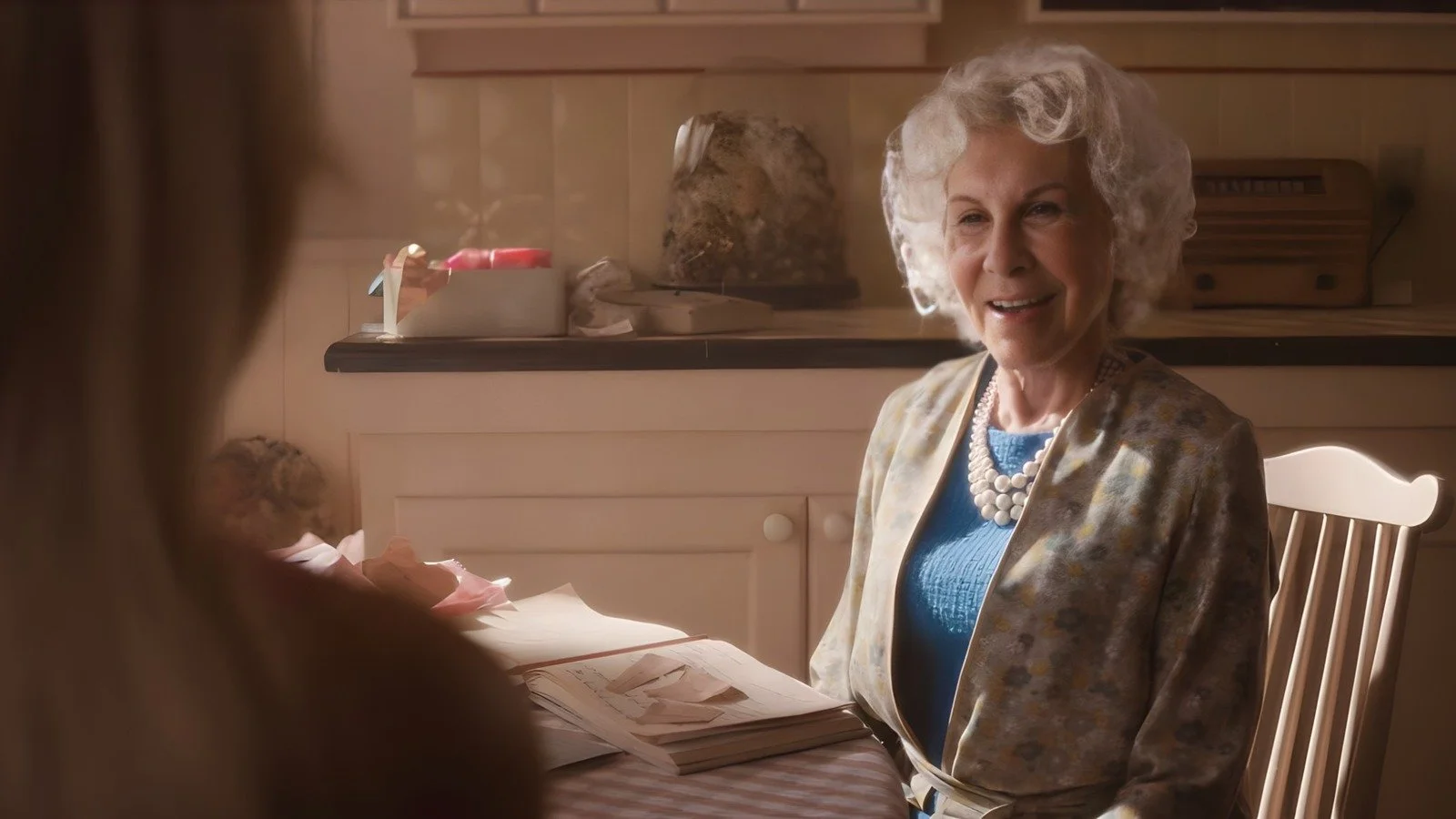Of course, Jesus is a Gardener (an Easter story that moves beyond substitutionary atonement)
Last year I was asked to do the children’s story at our church for Easter Sunday. I said yes, and then I panicked. How do I tell this sacred story for children without the substitutionary atonement script that is so deeply engrained in our culture and that I grew up with as the only available script?
I’ve been writing for quite a few years now about my journey to step into the important work of dismantling substitutionary atonement, prompted by my own children, but moving this intellectual work into a short story time for the children in our church community was another level entirely!
I knew I wanted to center Mary Magdalene as she’s going to be part of the future volume of Holy Troublemakers & Unconventional Saints, and her being present early Sunday morning is almost the only detail that all of the Gospel narratives agree on.
Thanks to inspiration from the Sparkle Stories podcast, the story framing of Jesus as a gardener came through as a life-affirming lens.
I immediately loved this framing both because it’s true to the sacred stories we have, and because spring gardening and being literally in touch with Mama Earth has been a life-giving practice for our family in the past few years.
Of course, Jesus is a gardener who planted the seeds of ideas about how we should care for each other through his teachings.
The stories we’ve inherited tell us that Mary took Jesus for the gardener in that early dawn light. And this framing makes sense because in his public ministry, Jesus planted seeds of ideas about how we should all take care of each other through his teachings.
I offer this story for all of you who might be needing or wanting to share this story with a slightly different lens. Please feel free to tell this story in your circles.
Read More
Barbie is a Better Creation Story
Watching the new Barbie film through the lens of a creation story has been deeply moving for me. As I watched the film with my teen daughter yesterday in what was my third viewing, the lens that kept moving me to tears was seeing Barbie as a creation story. And it’s a better creation story than the one most of us were immersed in and that still undergirds so much of our harmful patriarchal systems. Barbie does get to meet her Maker. And She’s a kind grandmother who has nothing but tenderness and pride for her creation as she watches her doing the difficult work of growing up.
Read More
God in Feminine Form
Our God language matters because it is how we conceptualize that which we hold as ideal. And in Western culture, which is deeply tied to Empire types of Christianity, Christian metaphors for God have been mired for centuries in tradition, sexism, and power. The pervasive idea that God equals male turned into male equals God. It has damaged us all at every level from personal to societal, and it needs to change.
This is not a new movement—for decades, womanist and feminist scholars have pointed out the harm done by male-centric God talk. Feminine images and language for God are found in the Jewish and Christian scriptures, which include references to God as a compassionate mother, a midwife, and a woman in labor. She bakes bread to feed the hungry, shelters Her baby chicks, and nurses Her babies. Julian of Norwich, a 14th-century female theologian and saint wrote: “As truly as God is our Father, so truly God is our Mother.” In the 20th century, Pope John Paul I echoed Julian when he said, “God is our Father; even more God is our Mother.”
But our texts and traditions have named and imagined divinity as “He” for so often and for so long that many of us have started to think God is actually masculine and male. This has enormous implications for how children of all genders grow up imagining (or not) their essence as part of the Image of God. Masculine language for God contributes to a world in which women and girls remain marginalized and seen as less than, and the mothering and feminine qualities in all genders are undervalued. Feminine God-language is liberating for us all.
Read More
What if Jesus came to live, not to die?
How might we view story of Jesus differently if we taught that he came to show us how to live, instead of coming to die? Maybe his execution by the state was actually an interruption in his teaching and not the point? Dismantling substitutionary atonement is holy troublemaking work indeed.
Early on in my faith shift (before I realized just how many atonement theories there are), I had a heck of a time figuring out how to talk about Easter with my daughter. She was three when she first asked me what Easter was about, and I didn’t know what to say. I knew I didn’t believe that a loving Divine required the sacrifice of an innocent, and yet that thread is so thoroughly interwoven through almost everything that Western Christianity and even secular Western culture touches, that I felt lost with where to even start unraveling.
“Um, well, it’s about spring and new life—and chocolate bunnies!” That’s pretty much what I went with for a few years as a punt because I didn’t have anything else to offer that I felt in alignment with. (And, truthfully, I think that’s a lot less harmful than indoctrinating young children that Jesus had to die because of their sins, so even if that’s where I’d landed, I’d be okay with that today.)
Besides the challenging inner work to move beyond substitutionary atonement, I know from personal experience that it can deeply offend people we love to suggest that there are other, also valid ways to read the Easter story. While difficult, I also deeply believe we must dismantle this harmful theology in order to help birth a world in which all can be respected and flourish.
After all, if we teach our children at impressionable ages that even God requires violence, then it's not a stretch to see how we've ended up in such a violent society.
Here are some resources to help.
Read More
Catching Courage From the Stories of the Saints
This is a season when many cultures celebrate and honor their ancestors. In the church world, we call this All Souls Day and All Saints Day, but the roots go back deeper and traditions with similar themes are present in many, many cultures. In this season, the veil between worlds is extra thin; the boundaries are blurry. We tell stories, we build fires, we prepare foods (I’m counting buying candy for trick-or-treaters under this generous umbrella!), and crucially we remember that we are connected to those who came before just as we are connected to those who will follow.
Read More
What is and is not holy trouble?
None of what we saw on Jan 6th was NOT holy or good trouble, and we need to talk about the distinctions between holy trouble and unholy trouble. Holy and good trouble does mean sometimes breaking unjust laws. Holy trouble does mean causing a disruption to the status quo. But the goals and intentions matter. This post is a start at sussing out the distinctions.
Read More
A Holy Troublemaking Gift Guide
Progressive faith-based children’s books that would make great Christmas gifts.
Read More
Books to Expand Thanksgiving Conversations
With Thanksgiving coming up, here are a few book recommendations to help make sure a broader story is being shared, one informed by Native stories and authors.
Read More
How to Talk to Children About Mother God (and Why Using Feminine Pronouns and Metaphors for the Divine Matters So Much)
Why I pray to Mother God with my children, even though I believe any transcendent Divine is beyond our gender categories. But modeling an inclusive Divine helps all of our children develop a healthy spirituality and ultimately helps push back on thousands of years of patriarchy that harms all of us. (And, no, simply using a gender neutral title for God isn’t enough because “God” doesn’t land as genderless in our bodies. We need God as She, Her, and Mother, even if we have to take baby steps to get there.) This blog links to an essay I’ve been working on for several months that includes scholarship and insights from Rev. Wil Gafney, Dr. Christena Cleveland, Sue Monk Kidd, Glennon Doyle, Kaitlin Curtice (and more), practical ideas, and some of my favorite artwork of our divine Mother.
Read More
eBook Now Available in EPUB and PDF Formats
Some books are just a bit too big to carry around with you but awfully nice to have around when you need a little inspiration. Now you can take Holy Troublemakers & Unconventional Saints with you wherever you may be in digital form.
Read More
Holy Troublemakers Online Story Time
One of our small offerings to help families, pastors, and teachers get through the Covid-19 lockdown was to do a weekly online storytime. There are nine storytimes in all, and the three modern-day holy troublemakers featured (Herb Montgomery, Leslie Foster, and Jennifer Knapp) were able to join in via phone, which made these incredibly special. The nine storytimes currently on YouTube (in order of production) are:
Florence Nightingale: A Holy Troublemaker and Unconventional Saint for Covid-19 Times
Mr. Rogers: Appreciating Each Other is a Holy Thing
Herb Montgomery: A Nonviolent Way to Talk About Easter
Leslie Foster: Overcoming Boredom & Changing Culture
Wangari Maathai: Listening to Indigenous People to Save the Earth
Rachel Held Evans: It’s Okay to Have Big Questions
Rumi: Sadness, Loss & Why It’s More than Okay to Make Mistakes (It’s How the Light Gets In)
Read More











